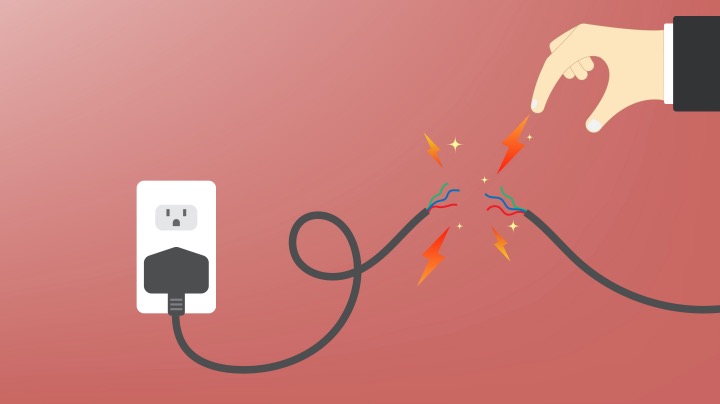Optimize processes with expert mechanical system optimisation support.
Optimize processes with expert mechanical system optimisation support.
Blog Article
Top Tips for Effective Electric System Troubleshooting
Troubleshooting electrical systems needs a systematic method, grounded in a comprehensive understanding of electric principles and safety and security protocols. The subtleties of efficient fixing expand past simple technological understanding; recognizing exactly how to record findings and focus on safety can substantially influence results.
Understand the Essentials
Comprehending the essentials of electrical systems is essential for reliable troubleshooting, as a strong foundation permits technicians to diagnose and fix concerns more successfully. An extensive grasp of electrical principles, such as voltage, existing, resistance, and power, is important in determining the origin of issues. Voltage is the electric prospective difference that drives existing via a circuit, while resistance opposes the circulation of current, impacting the total performance of the system.
Knowledge with circuit parts, consisting of resistors, capacitors, diodes, and switches over, is also vital. Each component plays an unique duty in circuit behavior and can impact efficiency when malfunctioning. In addition, comprehending collection and parallel circuit arrangements is crucial, as these arrangements influence the distribution of voltage and current within the system.
Specialists need to be conscious of potential hazards, such as shock and short circuits, to implement risk-free troubleshooting methods. By grasping these fundamental ideas, service technicians enhance their capacity to perform efficient diagnostics and repairs, eventually leading to enhanced performance and integrity of electric systems (electrical system troubleshooting).
Gather Necessary Devices
Effective troubleshooting of electric systems calls for the ideal collection of devices to identify and solve problems accurately. A fully equipped professional can considerably improve effectiveness and efficiency in determining issues. Vital devices consist of a multimeter, which determines voltage, existing, and resistance, permitting specific evaluations of electrical elements. Clamp meters are also important for determining current without detaching the circuit, guaranteeing safety and security and benefit.
In addition, insulated hand tools such as screwdrivers, pliers, and wire strippers are crucial for securely adjusting electrical links. It is likewise a good idea to have a circuit tester accessible to validate the presence of voltage in electrical outlets and cords. For even more complex systems, a thermal imaging electronic camera can assist find overheating elements, showing possible failures.

Adhere To a Systematic Method
Having gathered the appropriate tools, the next action in repairing electrical systems is to comply with a methodical method. A systematic technique guarantees that specialists can determine mistakes efficiently and properly, reducing downtime and preventing unnecessary repair work.
Begin by assessing the system's schematic layouts and specs. This involves monitoring each part systematically, beginning from the power source and working towards the load.
Utilize testing devices, such as multimeters and oscilloscopes, to collect objective data about voltage, current, and resistance at numerous factors within the system. This empirical proof will certainly lead your troubleshooting straight from the source initiatives and help to verify or remove potential reasons for failure.
In addition, think he said about environmental elements that might affect the system's performance, such as temperature level fluctuations or wetness access. A detailed evaluation of electrical wiring, links, and elements will certainly guarantee that all opportunities are accounted for.
File Your Findings
Comprehensive paperwork is essential in the repairing process of electric systems. This technique not only aids in comprehending the linked here root reason of the problem however additionally offers as a reference for future fixing initiatives.
Furthermore, keeping a log of components changed or fixings done is indispensable. This info supports stock monitoring and can assist examine the longevity and dependability of specific parts.
Inevitably, the documents procedure need to be thorough yet concise, allowing simple access and evaluation - electrical system troubleshooting. By focusing on in-depth documents, professionals can develop a useful data base that not just aids in current troubleshooting yet likewise encourages future upkeep efforts, therefore enhancing total system integrity

Prioritize Safety And Security Steps
Acknowledging the integral dangers connected with electric systems is crucial for making sure security during troubleshooting. Electrical shock, burns, and tools damage are just a few of the prospective threats that service technicians encounter. Prioritizing safety procedures is not just a legal obligation however additionally an ethical critical that safeguards both the specialist and the surrounding atmosphere.
Prior to beginning any troubleshooting job, technicians must wear proper individual safety equipment (PPE), including insulated gloves, security glasses, and flame-resistant clothing. Making sure that the job area is completely dry and without mess can dramatically minimize the risk of mishaps. It is important to de-energize circuits before beginning any kind of job, verifying that they are not live via the usage of a multimeter or voltage tester.
Developing clear communication protocols with group participants is also crucial; this guarantees that every person is aware of prospective dangers and the condition of the electrical system being worked on. Finally, having an emergency situation action strategy in position can show very useful in the event of an event. By prioritizing precaution, technicians can efficiently mitigate risks and cultivate a more secure workplace.
Final Thought
Reliable electrical system troubleshooting depends on an extensive understanding of fundamental concepts and a methodical strategy. Prioritizing security measures ensures the wellness of people involved and the honesty of the electrical system.
Report this page